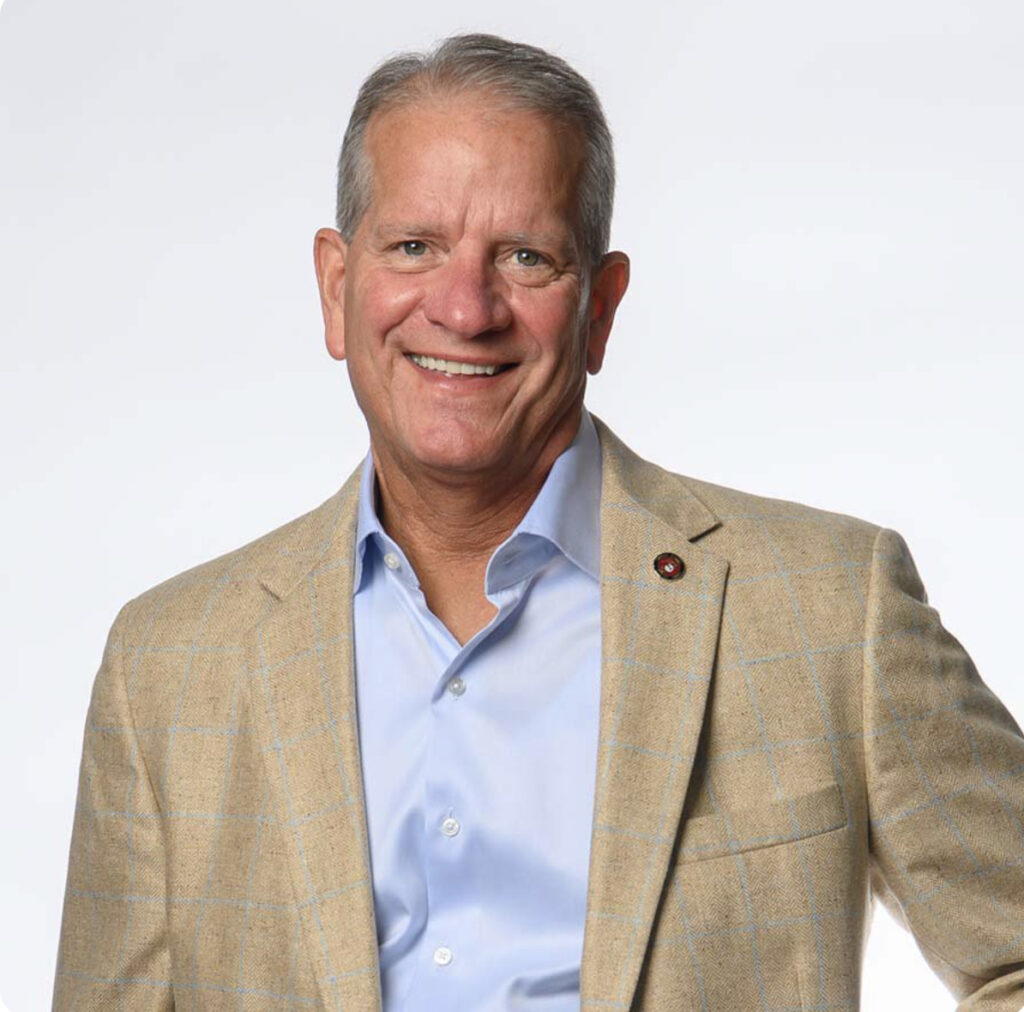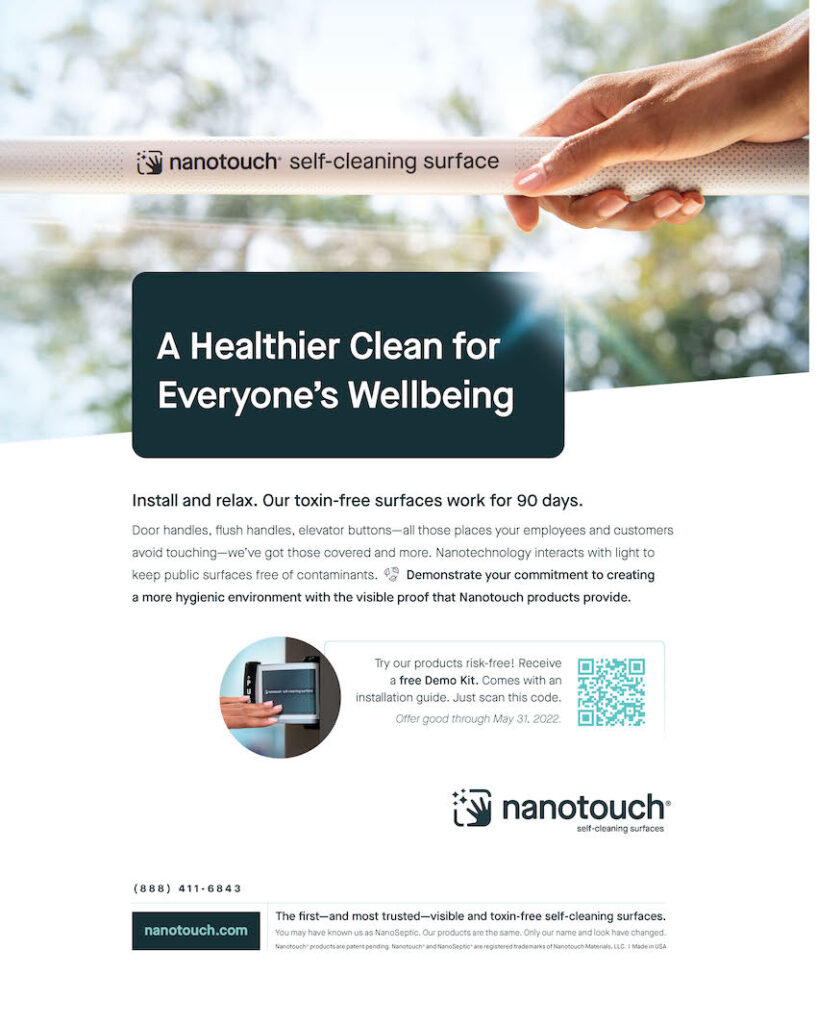By Dennis Hackemeyer
When the COVID-19 pandemic began, many businesses and organizations immediately turned to their facility or property managers, expecting them to have the answers on all things clean.
Two years later, many human resources professionals have assumed the lion’s share of the burden of dealing with cleanliness in a COVID environment. On top of everything else they do.
In Human Resource Executive’s annual end-of-year “What’s Keeping HR up at Night?” survey, 20% of HR leaders said they ended 2021 spending most of their time on virus management, second only to recruiting (40%) and retention (23%). And that’s not likely to change anytime soon as more and more employees return to the office in some capacity. Consider that the Bradley Corporation reports in a recent survey that handwashing has decreased 25% since 2020, and handshaking has increased 13% – and is expected to rise.
What’s more, in today’s world, pandemic management goes hand in hand with retention and recruiting. More than a third of employees (38.3%) said they would consider changing jobs if their workplace wasn’t cleaned properly, according to a survey conducted by the Cleaning Coalition of America. And as of mid-March, 55% of respondents said they would consider quitting if their employer tried to get them to return to the office before they felt safe, per Morning Consult’s return-to-work tracker.
Early in the pandemic, many companies failed to embrace putting employees first, instead focusing on the bottom line. Recently, however, they have realized the correlation between the bottom line and the wellbeing of their employees.
So, it seems natural that the responsibility for COVID response and preparation for return to the office have fallen to the HR professionals. Let’s face it, this has become more about our people than our facilities, and you know people better than anyone. Maybe you and your teams knew all along this would happen when the world’s workplaces shut down, but everyone else is just now catching up.
Still, it’s heady times, to say the least, for HR professionals across the country.
Two years after COVID-19 invited itself into our lives, where are we headed when it comes to the workplace? To answer that, we first need to review where we’ve been.
Looking Back Over the Past Two Years
One of the things we learned after the pandemic shut down offices and made work-from-home more than just an occasional courtesy was that we had to reevaluate what it meant to be clean.
Sure, a janitorial crew come by the office nightly or a few times a week, sometimes staggering what would be cleaned on certain days and what could wait until the next time. But many companies now would say there focus on clean was adequate at best. COVID spiked concern about the meaning of “clean” and forever changed it.
In partnering with marketing consultant Brand Federation, our company surveyed consumers about their experience of clean. Respondents said things like, “Disinfectant is the word of the day,” “It has made me more aware of my surroundings and that clean is not always clean enough” and “It has made me more aware of the importance of clean and how not being clean can affect my health.”
Naturally, businesses, universities and government agencies we work with amplified their cleaning regimens: more disinfectants; more regular cleanings; more sanitation stations; more, more, more.
What we’re leaning is that everyone – our employees, our guests and our customers – wants more. But are more chemicals really the answer? Or the healthiest approach?
What Matters Now
The pandemic has changed the nature of how we work. Many still are fearful about returning to the office. Some relish a relief from commuting and the convenience working from home offers. And others must address the logistics of daycare all over again. Coming back to the office should establish a sense of safety and security and cleanliness is a key factor.
Until now, however, much of the emphasis the past couple of years has been on our buildings or facilities. While needs and pain points will vary from industry to industry, the focus now must be on the health and wellbeing of customers, employees and stakeholders.
Some other things we heard from consumers include, “Clean now means a lot more effort to keep my family safe and healthy,” “My perception of clean means constant vigilance of cleaning surface surrounding that is handled frequently,” “I am now always more aware of surroundings and possible contamination” and “Public places don’t seem as clean as they should be.”
That sets a high bar for those businesses welcoming employees back to the office.
On one hand, it takes all the effort of employing the latest technologies and understanding the best cleaning protocols. On the other, it takes intentional and consistent work to ensure your employees know you care.
An effective way to show you care, create positive perception and enhance the employee experience is to make sure your efforts are visible at all times. This is supported by studies we conducted with customers like Burns Scalo Real Estate:
“The draw for employers, our clients, to entice staff back to the office is the visual – seeing that the Landlord and their Employer is taking strides to protect/sanitize/disinfect the workspace beyond typical evening janitorial and placing disinfectant wipes in the common areas.”
Angela Gillot, Business Development Specialist
In short, you need to prove you care.
In a way, though, you already knew that.
HR professionals are uniquely qualified to understand that engaged employees are vital to retention, recruiting and the bottom line. Their health and safety – while always important – now is as important as ever.
And it’s a good thing HR managers and professionals are on the case.


